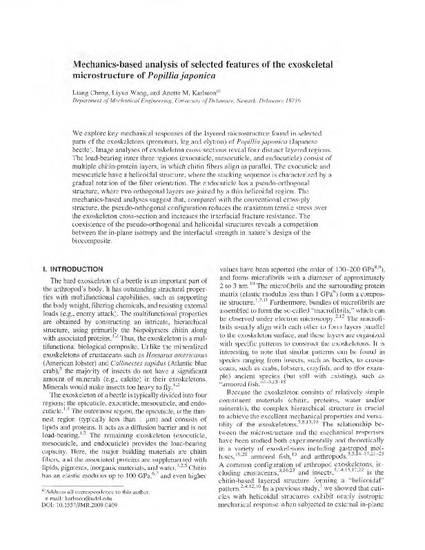
We explore key mechanical responses of the layered microstructure found in selected parts of the exoskeletons (pronotum, leg and elytron) of Popillia japonica (Japanese beetle). Image analyses of exoskeleton cross-sections reveal four distinct layered regions. The load-bearing inner three regions (exocuticle, mesocuticle, and endocuticle) consist of multiple chitin-protein layers, in which chitin fibers align in parallel. The exocuticle and mesocuticle have a helicoidal structure, where the stacking sequence is characterized by a gradual rotation of the fiber orientation. The endocuticle has a pseudo-orthogonal structure, where two orthogonal layers are joined by a thin helicoidal region. The mechanics-based analyses suggest that, compared with the conventional cross-ply structure, the pseudo-orthogonal configuration reduces the maximum tensile stress over the exoskeleton cross-section and increases the interfacial fracture resistance. The coexistence of the pseudo-orthogonal and helicoidal structures reveals a competition between the in-plane isotropy and the interfacial strength in nature’s design of the biocomposite.
